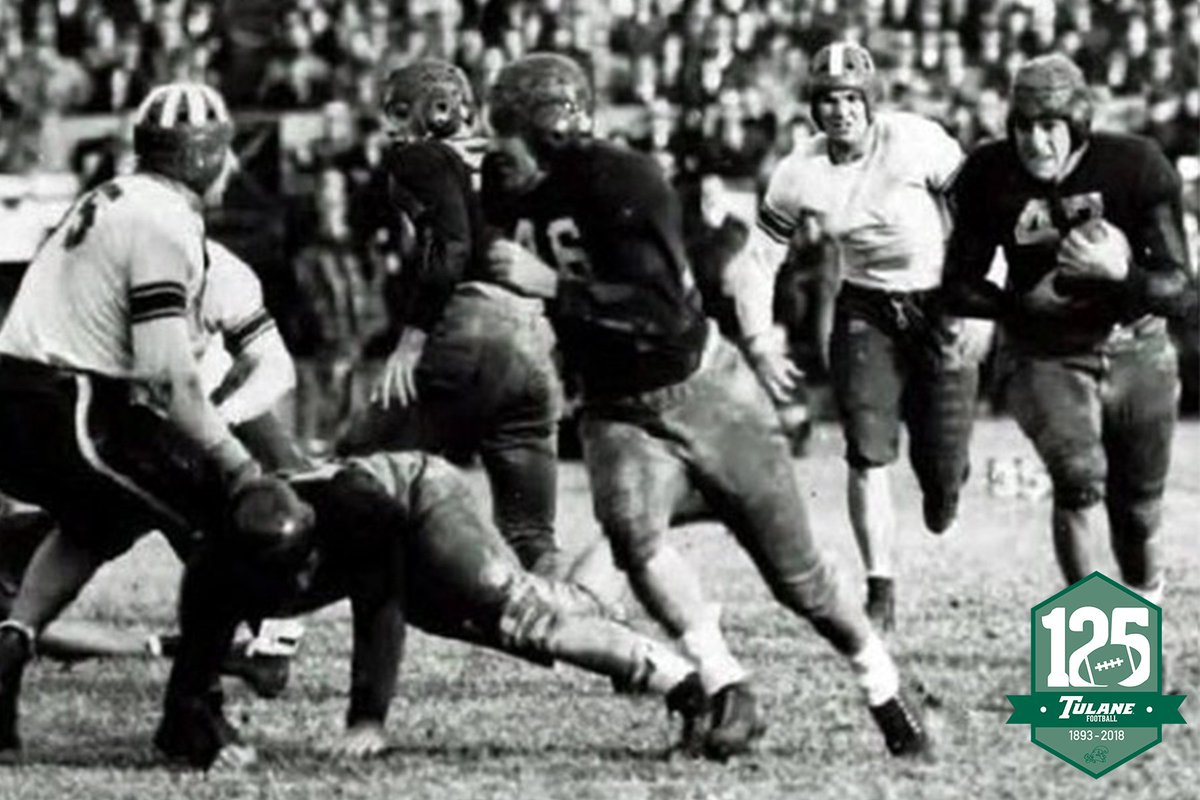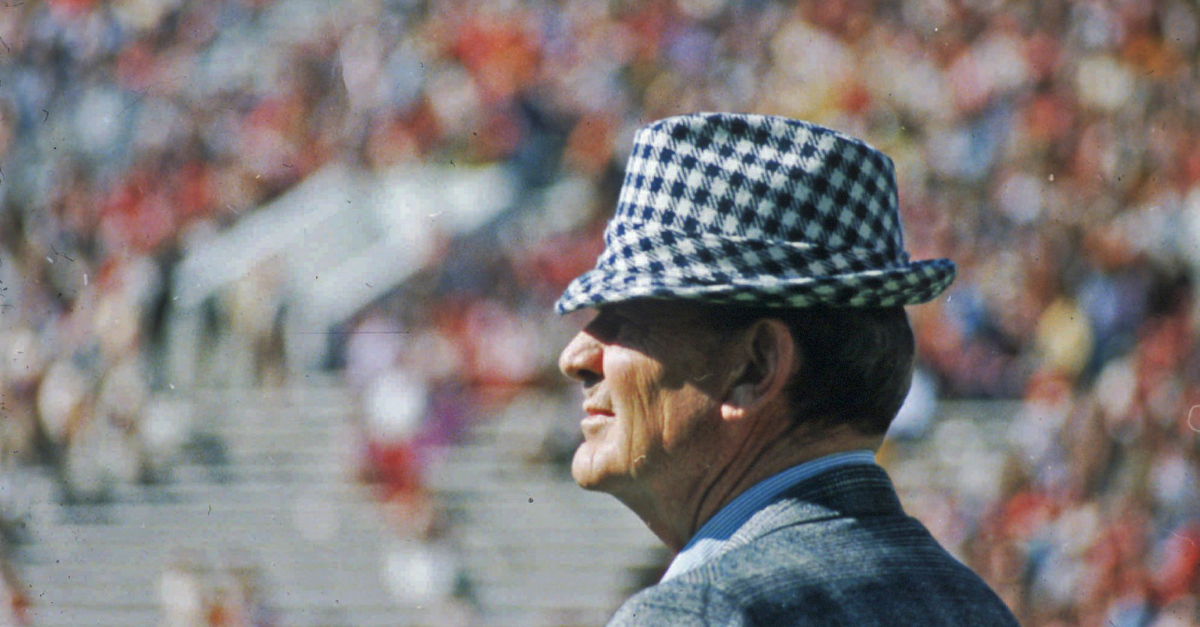The History of the Sugar Bowl: Woven Into The Fabric Of American History
By Alex Chinery
On January 1st 2020 I will be in New Orleans for the Sugar Bowl. To mark the occasion I am producing a series of articles for the Touchdown related to the event. Where better to kick off the coverage than at the very beginning. This is the first of a two part series on the history of the Sugar Bowl, New Orleans’ big football party. The Sugar Bowl is woven into the fabric of the 20th century; from the Second World War to the integration of America, a flavour of each episode of American history colours the list of matchups in this historic game.
A New Beginning - Temple Owls 14 - 20 Tulane Green Wave - January 1st 1935
In 1934 The Mid-Winter Sports Association of New Orleans was formed and tasked with setting in motion plans for an annual New Years Day football classic. The plans were set in motion after the repeated calls from a local Sports Editor, Fred Digby for New Orleans to host an event similar to the Tournament of the Roses Parade (Rose Bowl) in Pasadena. Digby also came up with the name “Sugar Bowl”, based upon the prior use of the grounds of Tulane University (the original venue) as the site where Etienne de Bore had first granulated sugar from cane syrup.
The game featured the hosts Tulane (9-1) and the undefeated Temple Owls (7-0-2), the Owls would take an early lead 14-0 before the Green Wave roared back to win the game. The turning point was a second quarter play unlike any other I’ve read about in football history. Tulane’s quarterback John McDaniel caught a Temple kickoff near the 15 yard line. McDaniel ran to the right, drawing the Temple tacklers before pivoting and throwing a lateral pass to teammate Monk Simons who ran the ball back 75 yards for a touchdown. A tradition was born.

In the Throes of War - Fordham Rams 2 - 0 Missouri Tigers - January 1st 1942
The grey skies above New Orleans on January 1st 1942 were the perfect metaphor for the feelings of many attending. The United States was still reeling from being thrust head first into the Second World War after Japanese forces attacked the Naval Base at Pearl Harbour less than four weeks earlier. By the time the game began, the clouds had opened into a storm of driving rain. The only score came in the first quarter. Fordham tackle Alex Santilli blocked a punt and defensive end Stanley Ritinski just failed to corral the ball before it ran out the back of the endzone.
The rain continued to fall, growing stronger as the game went on. The conditions were so bad both teams combined for just 21 yards passing (Fordham didn’t even attempt a forward pass) and only 307 total yards. No further points were scored, meaning the game finished with the lowest score possible from a non tied game. It is the only example of this happening in the history of bowl games.
The Integration Milestone - Georgia Tech 7 - 0 Pittsburgh - January 2nd 1956
One of the greatest triumphs of sport is that it can and does heal wounds. Events like the 1995 Rugby World Cup in South Africa which helped to heal a country still fractured by Apartheid. The 1956 Sugar Bowl is similar in its impact. The game is famous for the act of defience from Pitt fullback Bobby Grier. As a black man the idea of Grier appearing in the game faced opposition from many in the South. The controversy was wide spread enough for the Governer of Georgia to express his opposition to the Yellow Jackets even appearing in the game, which was taking place less than a month removed from Rosa Parks famous protest. However Grier took to the field on January 2nd; with the support of the players from both teams and a large portion of the student bodies of both universities.
Tech would go on to win the game 7-0 in an outcome that was nigh on inconsequential in the end. Grier’s participation and the fight that preceeded it is seen by experts as another key step in American race relations.
Unbeaten Heavyweights Collide For The First Time - Notre Dame 24 - 23 Alabama - December 31st 1973

Coming into this game the newly minted NCAA Division I had two recognised national champions across the various end of season polls. Both teams were undefeated, with college football titan Bear Bryant leading his Alabama Crimson Tide against Ara Parseghian’s Notre Dame Fighting Irish. It was the first ever meeting of what have become two of the storied programs of college football history. With two legendary head coaches and a bevy of incredible players the game was set up to be a spectacular contest; with the winner laying the strongest claim to being the National Champion.
The game lived up to the hype, with six lead changes and drama to the end of the fourth quarter. With a cold rain falling the most spectacular play fo the game came in the second quarter when Al Hunter returned the kickoff 93 yards for a touchdown. Hunter would go on to be famous for being the first player to enter the NFL through the supplemental draft. Entering the fourth quarter, Notre Dame led 21-17. Alabama quarterback Mike Stock led the offense down the field and threw a 25 yard touchdown to receiver Richard Todd. Alabama would miss the extra point (a pain all too familiar to modern day Alabama fans) to hold a lead of only two points with a bulk of the fourth quarter remaining. Notre Dame would march down the field and take the lead 24-23 on a field goal with four minutes remaining, however the drama was not over yet. An Alabama punt would leave Notre Dame with the ball on their own one yard line. Two misfires from the offense left Notre Dame with a third and long. As a hush fell over the crowd Notre Dame quarterback Tommy Clements threw a dart to his tight end, picking up the first down and allowing the team to run out the clock for a famous win.
Bear Bryant’s Final Title - Alabama 24 - 9 Arkansas - January 1st 1980
For the second straight season, an unbeaten University of Alabama program came into the Sugar Bowl in search of a national title. It would be the final time that Bryant donned his famous houndstooth fedora in the iconic bowl game. On the opposing sideline was future college football hall of famer Lou Holtz and his Arkansas Razorback team. By this point in his life, Bryant’s health was failing and his team knew this may be their last chance to win a national title with their coach.
Alabama flew out of the blocks in the game and stomped Arkansas. Two first quarter touchdowns for the Tide created a lead from which Arkansas could never recover. Alabama running back Major Ogilvie scored both touchdowns and was named MVP of the game. With the win Alabama was named as the sole national champion for the first time since 1966 and completed their first perfect season in over 10 years. It was the crescendo that highlighted the end of Bryant’s career as the coach of Alabama as the team would reach the same heights in the two seasons that followed. A fitting end to Bryant’s wonderful association with the Sugar Bowl, his enigmatic personality was at home in the Big Easy. So this end was fitting.
That was part one of my look at the history of the Sugar Bowl, make sure you check back for part two coming later this week.

Alex Chinery
NFL & CFB Analyst
ONE OF THE ‘COLLEGE CHAPS’. A TEXAS LONGHORNS AND GREEN BAY PACKERS FAN. A HUGE NFL DRAFT ENTHUSIAST, ALEX HAS BEEN FOLLOWING FOOTBALL FOR OVER 10 YEARS, SCOUTING FOR THREE AND WRITING FOR TWO. You can follow him on twitter @byalexchinery
